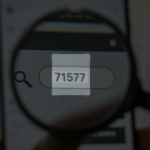If you’ve ever received a text message from a four-digit number, you’ve encountered a short code. These abbreviated numbers are used by businesses to send and receive SMS and MMS messages at scale. One of the most frequently encountered is the 6245 short code, often associated with major technology companies for account verification and security purposes.
The Primary Use: Account Security and Verification
The most common reason to receive a text from the 6245 short code is for two-factor authentication (2FA) or account verification. When you sign up for a new service or log in from an unrecognized device, many companies will send a temporary code to your registered mobile number to confirm your identity.
Google and its services are prominent users of the 6245 short code. When you are setting up a Gmail account, recovering your password, or enabling 2FA for your Google account, the verification code you receive will often come from 6245. This security measure is crucial for protecting your personal information from unauthorized access.
Other Potential Senders
While heavily linked to Google, the 6245 short code may also be utilized by other businesses for similar purposes. It’s not uncommon for various services to use a shared short code for sending one-time passwords (OTPs) and verification messages. Users have reported receiving codes for other platforms from this number as well.
What to Do When You Receive a Message from 6245
Receiving a text from the 6245 short code is typically a direct result of an action you have just taken, such as:
- Attempting to log into an account.
- Resetting a password.
- Creating a new online account.
- Confirming a transaction or setting.
The message will almost always contain a numeric code that you are meant to enter into the website or app you are using.
Security First: Responding to Unsolicited Codes

If you receive a verification code from the 6245 short code unexpectedly, it warrants immediate caution. An unsolicited code could mean that someone else is attempting to access one of your accounts using your phone number.
Do not share this code with anyone. If you were not actively trying to log in to a service, ignore the message. It would be a prudent next step to visit the service in question (such as your Google account) directly—not by clicking any links in a message—and review your security settings and change your password as a precaution.
You cannot opt-out of receiving these messages in the traditional “STOP” reply sense, as they are transactional and essential for account security. You would need to disable two-factor authentication on the specific service itself to stop receiving them, which is generally not recommended.


